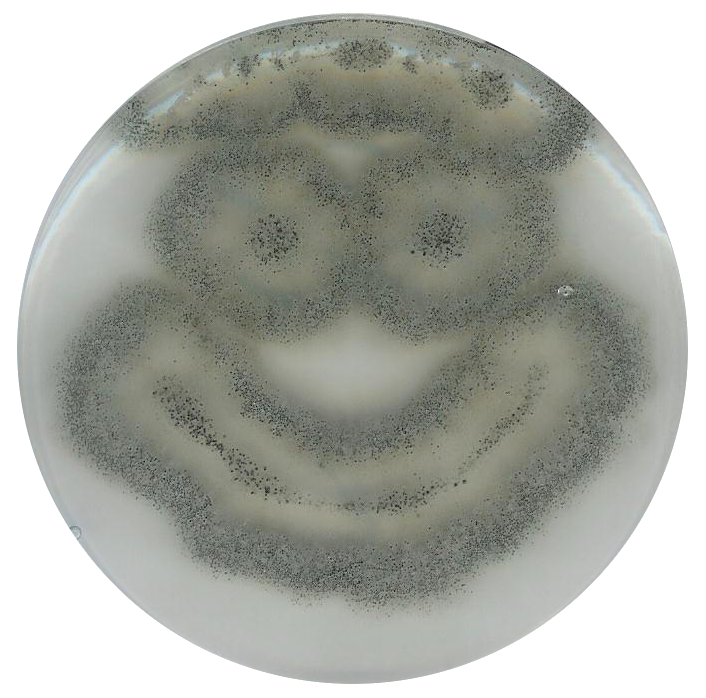Podospora anserina
Podospora anserina is a filamentous fungus widely used as a model system to study various processes such as development, ageing, prions, etc. The genes responsible for histones posttranslational modifications are also well conserved, making P. anserina a handy alternative to higher eukaryotes to study the role of epigenetics in development and genome stability.
P. anserina grows fast on axenic medium (about 7 mm per day) and can complete its life cycle in a week.
| Figure 1- Thallus and fructification of P. anserina Source: Pierre Grognet |
|---|
 |
During its life cycle (Figure 2), a spermatium, acting as the male gamete, from one of the two mating types, mat+ or mat- , fertilizes an ascogonium, the female organ, of the other mating type, initiating sexual reproduction. A hook-shaped crozier cell containing one haploid nucleus from each mating type then forms. The nuclei undergo duplication and one duplicate from each mating type then separate into a dikaryotic cell where they undergo karyogamy, beginning the brief diploid phase of the life cycle, as meiosis initiates immediately. Following meiosis and a post-meiotic mitosis, haploid nuclei of different mating types are packaged into ascospores, which are ejected to begin the cycle anew. Normal development of P. anserina thus requires tight regulation of the complex mechanisms directing these developmental processes.
| Figure 2- Life cycle of P. anserina Source: Peraza-Reyes and Berteaux-Lecellier, 2013 |
|---|
 |
You can find much more about P. anserina in this book and see how the hyphae are growing with this video